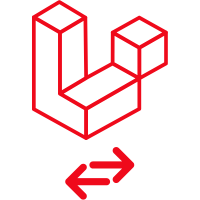The Forex trading server can define your earnings and losses with its performance. So it is better to go with the indispensable tool to gain an advantage over the competitive edge. You will get a seamless forex VPS with low-latency New York datacenter from a trusted DedicatedCore hosting provider. That tool is a Virtual Private Server that you can set up as you need to execute trades.
Read
Choose your favorite categories and topics. You will find extremely useful content over the site.
Comment
Communicate with authors and users. Provide them your feedback and collaborate with the community.
Rate
Authors will be happy to receive your positive vote on articles you found helpful and enjoyed reading.
Trending articles

Implementing Commands and Queries in Laravel 12
CQRS, short for Command Query Responsibility Segregation, is a simple yet powerful way to split the responsibility for writing and reading data in an application. Instead of having a single service or model method that both changes and retrieves data, you give commands the job of making changes and queries the job of fetching information. This split can make large projects much easier to follow, especially as business rules grow and read and write requirements start to differ.

Practical guide to PHP 8.5 containerization
Containerization for PHP 8.5 gives a simple, predictable and practical way to run applications without worrying about what the host machine has installed. A container bundles PHP, extensions and all required tools in one place. This helps teams keep things clean, reproducible and easy to work with. The idea is straightforward: you build an image, start containers from it and share the image when needed. PHP 8.5 brings performance improvements and a smoother developer experience, so pairing it with Docker is a natural step for modern projects.
Recent articles

Merry Christmas and a Happy New Year!
As Christmas arrives, we wish you days filled with calm moments, cheerful gatherings, and the comfort of those you hold dear. May this period bring a gentle pause to reflect, appreciate, and enjoy everything that makes this time of year special.
With the New Year approaching, we welcome the chance to grow, create, and move forward with renewed energy. May the coming months bring good health, meaningful progress, and moments that inspire you and those around you.

Practical guide to PHP 8.5 containerization
Containerization for PHP 8.5 gives a simple, predictable and practical way to run applications without worrying about what the host machine has installed. A container bundles PHP, extensions and all required tools in one place. This helps teams keep things clean, reproducible and easy to work with. The idea is straightforward: you build an image, start containers from it and share the image when needed. PHP 8.5 brings performance improvements and a smoother developer experience, so pairing it with Docker is a natural step for modern projects.

Soil moisture sensor with Arduino
Soil moisture modules are a simple and friendly way to check how wet your soil is using a pair of probes and a small control board. They offer two outputs you can use with Arduino: an analog signal that changes depending on how wet the soil is, and a digital signal that flips on or off when the moisture crosses a level you set with the onboard potentiometer. The whole setup is compact, cheap and very popular for plant care projects, garden automation and basic hobby experiments.
Popular on HiBit

Playing popular songs with Arduino and a buzzer
Buzzer is used to generate sound, beep or even melody of a song. It can be found in alarm devices, computers, timers and confirmation of user input such as a mouse click or keystroke. A piezo buzzer is not like a regular speaker that you might think of. It uses a material that actually changes shape when you apply electricity to it which in turn creates noise. The faster you bend the material, the higher the pitch of the noise that is produced.

How to use the L298N motor driver module
The L298N Motor Driver is a controller that uses an H-Bridge to easily control motors direction and PWM to control the speed. This module allows you to independently manage two motors of up to 2A each in both directions. Supply range may vary between 5V and 35V, enough for most DC motor projects.

Mastering the E88 Pro drone
The E88 Pro Drone is an exceptional flying device that combines advanced features, reliable performance, and a user-friendly design. Built with innovation in mind, this drone offers an immersive aerial experience for beginners and enthusiasts alike. Operating the E88 Pro Drone is a breeze, thanks to its intuitive controls and user-friendly interface. The drone can be easily controlled using a dedicated remote controller or a smartphone application. The remote controller offers precise maneuverability, while the smartphone app provides a comprehensive set of features and flight modes. From automated flight paths to real-time video streaming, the app enhances the drone piloting experience and unlocks advanced functionalities.
